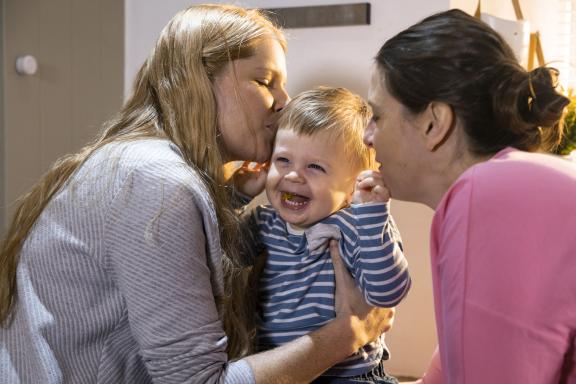Types of fostering

There are a number of different fostering schemes, reflecting the variety of backgrounds and needs of individual children. Whatever your situation, there will be a scheme to match the type of help you can offer.
Short-Term Fostering
Short term carers look after children for anything from a few days to two years while we work with their families to secure their future, hopefully by enabling them to return home.
Long Term Fostering
If a young person is unable to return home to live they may need a substitute permanent family for the rest of their childhood. For some children, adoption is not appropriate; this may be due to their age, their need to maintain regular contact with their birth families or due to their needs. Some children may also need to be placed with their siblings or have ongoing, regular contact with their brothers and sisters who may be placed elsewhere.
Parent and Child Fostering
Parent and child fostering, also known as 'parent and baby' fostering, is a specialist type of fostering where a parent (often a mother and their baby) comes to stay with you at a time when they need extra support. You will need to work closely with the child's social worker and play an active role in mentoring and teaching the mother positive parenting skills, without taking over their responsibilities as mothers. You will offer them a safe and secure environment where they can learn to parent their child in a positive and nurturing manner. Parent and child fostering lets you make a real difference to parents and their children and keep families together.
Adolescent Care Team (ACT) foster care
This is a unique opportunity where carers provide long-term, family-based placements to young people aged 10 to 18 years who are moving out of residential care or from a foster care placement outside of the county.
Short Breaks (Shared Care)
This scheme links carers with a family who have a child or children with disabilities. Our Shared Carers look after a child on a regular basis, usually for a weekend each month, which gives their families a well-earned break. The flexible scheme means that you can continue to work while fostering and still make a huge difference to lives of local children and their families.
Homestays
This is not strictly speaking a fostering scheme. It provides supported accommodation based within the community for young people leaving the care system and is a way of allowing young people to learn how to live independently.
Approved Support Care
Approved Support Carers provide temporary breaks to existing carers and families when they need it. There is most demand for this type of fostering at weekends and during school holidays.
Emergency
This is where children or young people need somewhere safe to stay for a few nights until longer term arrangements can be made. In an ideal world, all foster placements would be well planned out in advance. However, in some situations it isn't possible to decide a placement ahead of time. For many reasons, some children come into the foster system on an emergency basis, requiring immediate care. There's no telling when an emergency placement might come up, which means that emergency carers need to be available at night and on weekends, as well as during the day.
Private fostering
This is where the parents make an arrangement for the child to stay with someone else who is not a close relative and has no parental responsibilities, and the child stays with that person (the private foster carer) for more than 27 days. Although this is a private arrangement there are special rules about how the child is looked after. The Local Authority must be told about the arrangements and visit to check on the child's welfare.
Get in touch
If you're thinking about fostering then we'd love to help.
- Come to a local information event
- Register your interest online
- Email hello@fosterwithus.org.uk
- Call 0300 0190 200
